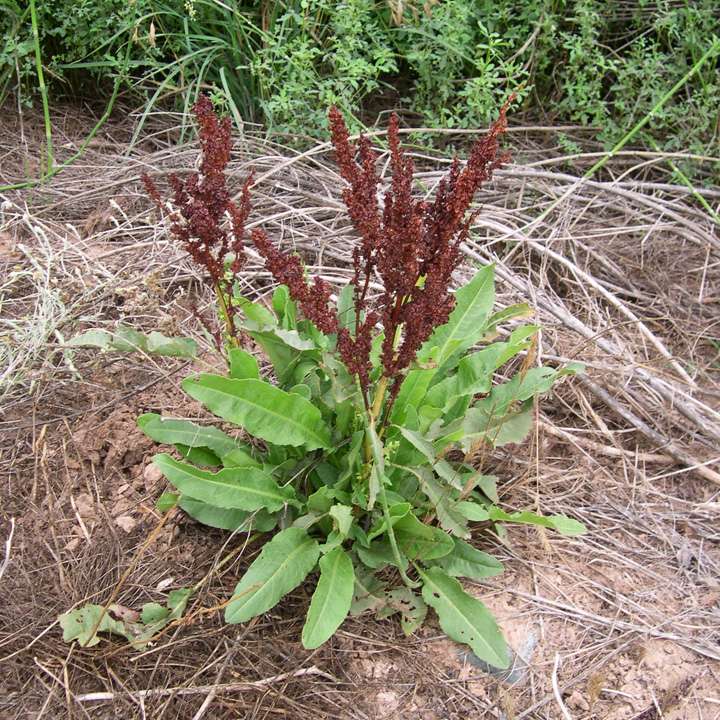Rumex crispus
- Family: Polygonaceae
- Common Name: curly dock
- Symbol: RUCR
- Description: Duration: Perennial Nativity: Non-Native Lifeform: Forb/Herb General: Perennial herb, 30-120 cm tall, from a spindle-shaped, vertical rootstock; stems stout, erect, simple or branched above the middle, glabrous, and greenish to reddish. Leaves: In a basal rosette and alternate along the stems, on slender petioles. Basal leaves lanceolate, 10-40 cm long, with ruffled (crisped) edges; stem leaves smaller. Ocrea (stipules fused into a sheath which surrounds the stem at the base of each leaf) 1-7 cm long, tan, membranaceous, early-deciduous. Flowers: Greenish, in a terminal panicle which occupies the top half of the plant; panicle branches ascending, 10-50 cm long and densely flowered with whorls of 10- 25 bisexual flowers; each flower has 3 outer bract-like tepals and 3 winged inner tepals called valves which enlarge to 4-6 mm long in fruit, the wings forming a broadly ovate to orbicular shape with mostly entire margins; each valve usually has a grain-like tubercle called a callosity. Fruits: Achenes trigonous, 2-3 mm high, reddish-brown, surrounded by the three enlarged inner tepals (valves). Ecology: Found in moist areas from 3,000-9,000 ft (914-2743 m); ubiquitous in temperate North America; flowers March-October. Distribution: Native to Eurasia and northern Africa; naturalized throughout the world; throughout N. Amer. and in every state in the US. Notes: An incredibly common tall biennial or perennial of moist soils; distinguished by the leaves which are crinkled or crisped along the edges, hence the species' name; the inner tepals or valves, seen as 3 wings on the fruits, are 4-6 mm long, have edges that are mostly without teeth, and have drops of hard tissue in the middle termed collosities. SEINet Portal Network. 2020. http//:swbiodiversity.org/seinet/index.php. Accessed on November 05.
Additional Images
- There are no additional images for this species.
